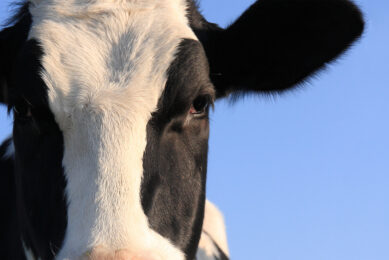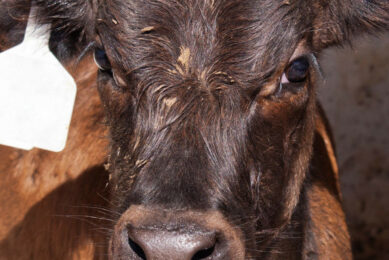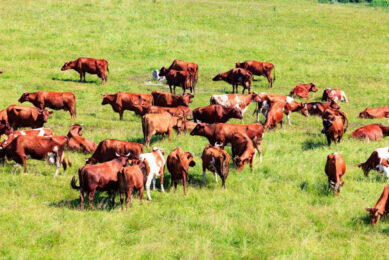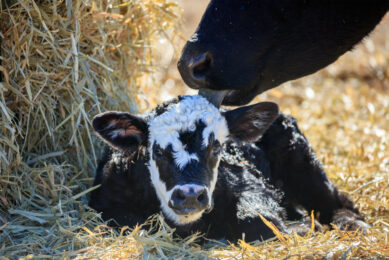Injection of Norwegian Red genetics pays off
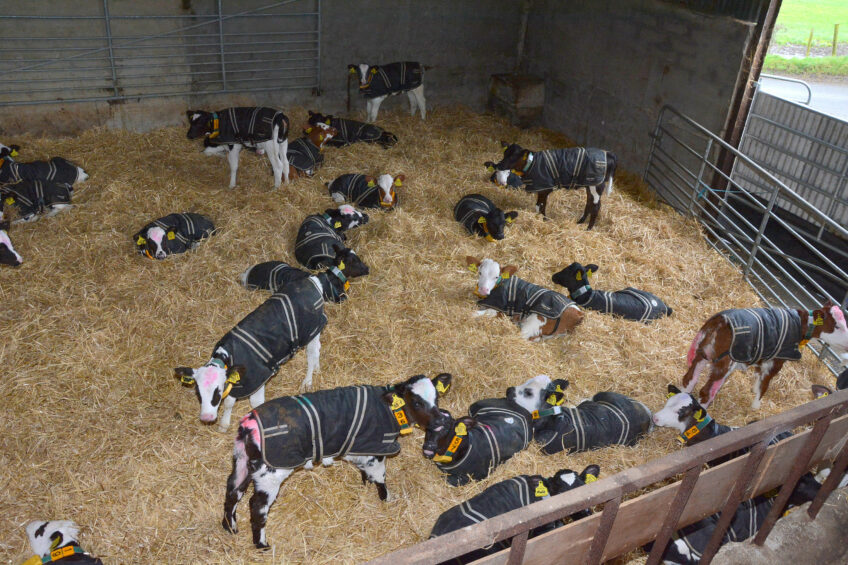
Introducing Norwegian Red genetics into what was predominantly a Holstein herd has injected major visible improvements onto a Northern Ireland dairy farm.
John Killen currently runs a herd of 220 cows on his farm at Campsie in County Londonderry in the north west of Northern Ireland. The farm was started back in 1957 by John’s grandfather making him the third generation of the family to run the business. Until the 90s the herd was comprised of mainly Friesian and Holstein cows but John has changed the breeding goals since he left agricultural college and started farming at home. However, since introducing Fleckvieh and subsequently Norwegian Red genetics into the mix, his herd now consists of 60 Holstein cross cows, 100 Fleckvieh crosses and 60 Norwegian Red cross cows.

Superior characteristics
The future goal for John is to introduce more Norwegian Red strains into his herd via crossing the breed with his already established Holstein cross Fleckvieh animals. According to Killen he cannot wait to breed the Holstein dominance out of the herd, but admits the breed traits are essential to breed a decent Norwegian Red cross. He said: “I have been using the Norwegian Red genetics for a number of years now and am milking third lactation crosses in the herd today. I crossed Norwegian Red with both high percentage Holstein and Fleckvieh cows to breed an animal that is the correct height, structure and with the milking capabilities I am after”.
Killen already sees the Norwegian Red superior characteristics coming through in his heifer crosses. “Crossing the Norwegian Red genetics with the Holstein and Fleckvieh crosses is producing a three way cross cow which is very fertile, is easy to calve, milks well and has longevity. So far I am finding the Norwegian Red sired cows are excellent mothers and are really easy to manage”, Killen explains. “They perform well both during the grazing months and from the Total Mixed Ration (TMR) I feed them in the housing period mixed on the Keenan Alltech system,” he says.
Interest spurred after Dutch trip
Killen’s entire herd is averaging 8,300 litres per cow per year with 3.3% protein, 3.99% butterfat and 4.82% lactose recorded in the most recent milk analysis report. His cows were out at grass this year from late March to early October and are currently being fed first cut silage in the ration. Cows are milked twice per day in a Fullwood 20 point swing over 90 degrees parlour and are housed in cantilever cubicles on mattresses.
The interest in the Norwegian Red breed for John came about following a trip to the Netherlands hosted by Geno in 2013. “I was searching for a breed that I could cross with my Holstein and Fleckvieh cows,” said John. “I really wanted something that would reduce the height of the Holstein yet maintain a cow that would milk well with good feed efficiency. I didn’t want to introduce Jersey as they are too small, and I didn’t want Brown Swiss either”, according to Killen. Following a Geno trip to the Netherlands in 2013, the Irish farmer was sold on the Norwegian Red animals and starting using bulls such as Braut, Sand and Val. Killen has just calved 30 Norwegian Red dominant heifers from his original Holstein crosses and is very pleased with the outcome.

Killen: “I wanted a three way cross to increase the hybrid vigour. I find the Norwegian Red heifers from both the Holstein and Fleckvieh crosses are excellent mothers and start milking well immediately. I have to add that they only start to fill out in terms of body capacity and growth in their second or third lactations, but when they do they are proving to be excellent animals which are increasing my herd longevity. It’s also in their third lactation that the Norwegian Reds are milking at full capacity and I have some cows yielding up to 32 litres per day”. For Killen, the Norwegian Red animals have good teat placement and he finds they have a good temperament but can look after themselves at the feeding barrier.
Another advantage
“I calve most of the herd from October onwards and try to calve around 60 cows and heifers per month to help with space and feeding. I am using Norwegian Red semen from Genus in Northern Ireland on my better cows and intend to have around 120 inseminated with bulls such as Sand and Gopollen,” he says.
Killen keeps the first 180 calves from his herd and rears the heifers as replacements and the males go through for bull beef. Belgian Blue and Aberdeen Angus bulls are used on the late calving cows as well as some of the dairy heifer crosses. As an extra benefit of using Norwegian Red John says he is impressed by the males of the breed in his bull beef system. “The Norwegian Red males are easy to pick out in the batches of bull beef we rear. We send them for slaughter just under 16 months of age and they are killing out over 350 kilograms. On average the Norwegian Red Fleckvieh cross males are bringing in around € 1,436 per head and the Norwegian Red Holstein cross males around € 1,322 per head, which I am very pleased with indeed. Overall, I am well pleased with the Norwegian Red breed and will continue to use it to increase the performance of my herd in the future,” he concludes.
Join 13,000+ subscribers
Subscribe to our newsletter to stay updated about all the need-to-know content in the dairy sector, two times a week.



